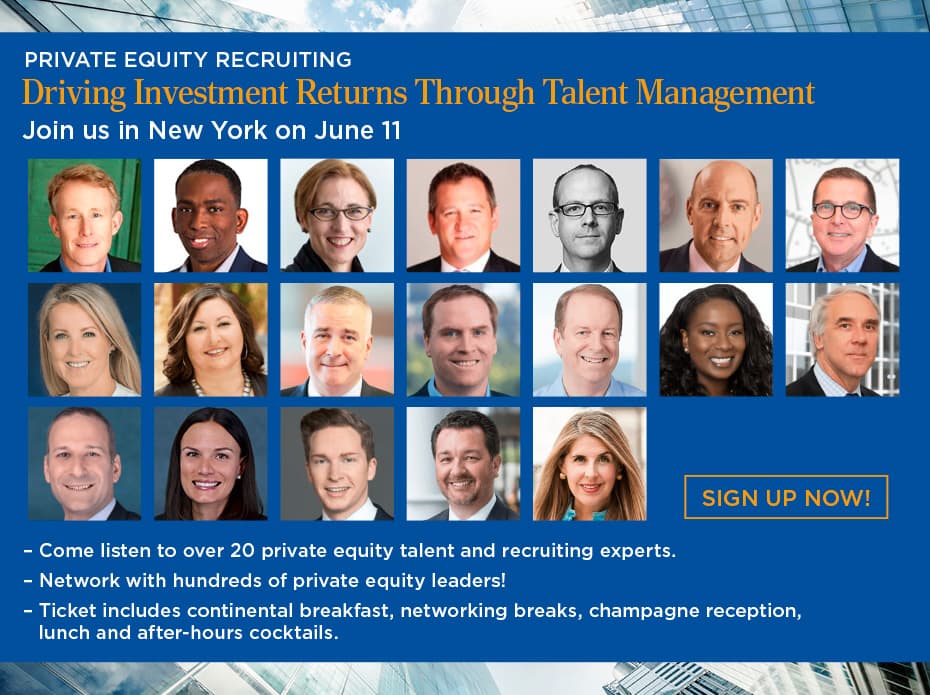Hunt Scanlon Media’s Top 10 Recruiting Stories of 2019

December 27, 2019 – What a year to be covering the executive recruitment industry! Going back over the hundreds of stories Hunt Scanlon Media brought to our readers over the course of 2019 has been both exhilarating and revealing. Change continues to come to the field, often in the most surprising ways. There has been growth and expansion, new ways of looking at the industry, technological innovation and formidable challenges of all kinds. To try to select the 10 most important stories out of a bounty of important stories was not a task for the faint-hearted. But as we do every year, our staff proved up to the job.
From the top levels of the biggest companies to the halls of academia and beyond, executive recruiters were making a difference like never before, helping through their efforts to shape the business world all of us work in.
A recruiter’s job has never been described as easy, however, and 2019 was no exception. Just this month, the Los Angeles Superior Court came down with a ruling against Netflix, for poaching senior leaders from major studios, throwing into question an age-old practice for recruiters and companies everywhere of reaping the talent bounty of rivals.
Different players have risen to the fore for the search industry as well. Private equity and venture capital firms certainly made their presence known over the last 12 months, serving as the major driver of search assignments as they seek senior talent that can produce big payoffs for the record-breaking number of deals they consummated this year and new ones expected in 2020 and beyond.
The recruitment field, of course, is perpetually changing, and this year that evolution was quite noticeable. Certain areas of focus have risen to prominence, with attention to company culture in particular taking on even greater appreciation and significance than usual, as our story in March revealed.
Executive positions, meanwhile, are evolving in the organizations for which recruiters find leaders. In 2019, we told you about the rise of the chief learning officer, a role that is rapidly expanding, as organizations fight to retain their best employees. The CHRO position also continues to take on greater importance, becoming an integral player on many boards, as we reported this spring. And across the nation, colleges and universities are looking for presidents with specific leadership skill-sets that go far beyond a mere academic background, sparking a hiring boom at institutions of higher learning across the nation.
For women leaders, however, change continues to come slowly, if at all. This year, our article about gender imbalance between corporate boards and executive teams revealed that only 25 percent of the overall leadership population is female and only nine percent of commercial and business roles are held by women, statistics that show progress for women to be “excruciatingly slow,” according to one insider. We can only hope that we’ll be giving you better news on that front in 2020.
As for good news, certain recruitment firms lit up the skies in 2019. We were particularly impressed, as no doubt were their clients, with the inroads that London-based Wilton & Bain has made in the U.S., adding a Boston office this fall (in addition to its already established and expanding New York location). This year alone Wilton & Bain doubled headcount, doubled revenue and doubled profitability. And out in Silicon Valley, Frederickson Partners has forged a reputation not only for finding great HR talent but for its commitment to diversity, inclusion and belonging. In 2019 the firm showcased the growing influence that such well-run boutiques continue to have over their larger rivals.
In days of change, executive recruiters are pivotal players. Periodically, Hunt Scanlon Media has asked recruiters to provide their insights into the industry, which have been useful to fellow headhunters and clients alike. One such story we gave you in 2019 offered seven reasons why businesses employ search firms, which opened a window into just how much of a contribution a good recruiter can make in helping an organization rise to the top.
Pretty good reading! Make no mistake, it was no small challenge to pick the top 10 stories of this exciting year. But here they are, setting the stage for the year that awaits us. Thank you all for your loyalty and trust!
 Leadership Turnover Creates Surge in Searches for College Presidents
Leadership Turnover Creates Surge in Searches for College Presidents
A growing number of top colleges around the country are looking for high-profile leaders to take them into the future. In most cases, executive recruiting firms have had a hand in some aspect of the search and selection process. Atlanta-based Parker Executive Search, for one, was enlisted to find the next president for the University of South Carolina. Search firm president Laurie C. Wilder and vice president Porsha L. Williams led the assignment. The University of South Carolina wanted an entrepreneurial president with a vision to inspire academic achievement, administrative excellence, and creative productivity with a commitment to South Carolinians, said Parker Executive Search. The president serves as the chief executive officer for the flagship Columbia, SC campus and for the entire University of South Carolina system.
 The Expanding Role of Culture in Search and Succession
The Expanding Role of Culture in Search and Succession
Culture fit is hardly a new concept. Well before the rise of various models and frameworks to evaluate organizational culture, companies recognized the risk of hiring a cultural mismatch — such as the lone wolf in a company that values collaboration. New employees, especially leaders, who clash with the culture are often ineffective, and are likely to quickly depart for a friendlier environment. “As appreciation has grown for the power of culture to influence individual, team and business performance, many leaders are looking for more systematic approaches to evaluating culture, personal fit and culture impact,” so concluded a report by Spencer Stuart. “With this insight, they can make better decisions about hiring and promoting, improve the success rate of leadership transitions and ensure that they develop future leaders who are able to positively influence culture.” The report was authored by veteran search consultants Alexander Hiller, Dimity Hodge and Jesse Price.
 Private Equity Sector Fueling Growth and Credibility for Recruiters
Private Equity Sector Fueling Growth and Credibility for Recruiters
Private equity firms have been under tremendous pressure to find senior talent and that has turned the entire sector into a phenomenal growth driver at recruitment firms across the U.S. Last year, records continued to be broken as upwards of 40,000 deals involving venture capital or private equity financing, mergers or acquisitions were consummated across the country. Indeed, in the last seven years PE firms have raised $3 trillion. And — for better or worse — more than a third of that ‘dry powder’ sits on the sidelines waiting to be deployed. Yet beneath the unflagging optimism that PE firms will continue to produce stellar returns lurks a growing pressure to deliver the goods. Raising the heat is a constant murmur about an imminent decline in the economy. Many professionals, meanwhile, are uneasy about the mounting stockpiles of unused capital.
Few would argue against the vital importance of a strong business strategy in establishing direction and planning growth for a company. Strategy, however, represents only half the formula for corporate success. Without a forward-looking human resources plan – a subset of the business strategy designed to maintain and engage the people required to execute the strategy at every level – even the best strategy is of little use. “Given the rapid transformational change occurring in business today and the need to adapt quickly, the best human resources plans also entail ongoing succession planning for all mission-critical positions, including at the top of the house for the CEO and the executive team most closely linked to the overall corporate strategy,” concluded a report by DHR International.
 7 Reasons Why Companies Hire Search Firms
7 Reasons Why Companies Hire Search Firms
In times of change, a crucial executive-level appointment can mean the difference between success and catastrophe. Last time, your company may have kept this critical search in-house, leveraged its own network or hired a contingency recruiter. But, mistakes were made, and you now know that a bad hire to a crucial position can have detrimental consequences that can take much time and expense to recover from. That’s why companies often choose a retained executive search firm for their executive-level appointments, according to Mickey Matthews, international chairman of Stanton Chase. “In contrast to a contingency recruitment, where an employment agency is hired to collect CVs and send applicants to the client company, an executive search firm is retained in an advisory capacity and is engaged in all aspects of the talent acquisition and hiring process, from defining the search through candidate onboarding and integration,” he said.
 Finding Transformative Leaders Fueling Growth & Innovation at Wilton & Bain
Finding Transformative Leaders Fueling Growth & Innovation at Wilton & Bain
In the early years after its founding in 2001, London-based Wilton & Bain was content to be a respected, tightly focused professional services executive search firm. With technology as its niche, it was a good business, everyone agreed, and profitable. Yet it was relatively small and geographically limited. Fast forward 18 years and behold a new picture: Wilton & Bain is making big gains in London and even more in the U.S., where it is in full growth and expansion mode.
 Changing the World, One HR Leader at a Time
Changing the World, One HR Leader at a Time
Since civil rights activist Cezar Chavez came to speak to her second-grade class about the plight of the farm workers, Valerie Frederickson has worked to help others improve their lives and in the process make for a better world. As the teenage daughter of parents devoted to desegregation and diversity, she spent her summers volunteering at an orphanage in Mexico. As a college student, she organized a series of career seminars for liberal arts majors, cajoling executives from leading companies to come and speak and share their wisdom with students who did not have degrees that translated directly into business. And as founder and CEO of the Silicon Valley human resources and people search firm Frederickson Partners, she has forged a reputation for not only finding great talent but for her commitment to diversity and inclusion, both in the slates of candidates she presents and within her own firm.
 The Expanding Role of Chief Learning Officers
The Expanding Role of Chief Learning Officers
The profile of a contemporary chief learning officer is both emerging and evolving. But one thing is for sure: the role is expanding, rapidly, as organizations fight to retain their best employees. Why? It seems that no other C-suite position is better positioned, better equipped, or better suited to foster a strong learning culture – and that, according to executive recruiters in hot pursuit of chief learning officers, leads to higher engagement levels, happier employees, and higher retention rates. If you’re looking for a competitive edge, hire yourself a CLO – fast. The role is relatively new, and was first introduced in 1989 by then CEO of General Electric, Jack Welch. He brought in Steve Kerr, a consultant to the company, to be the organization’s very first chief learning officer. His main task was to oversee employee development, something Mr. Welch focused on like a laser beam as he pushed GE into all sorts of new businesses.
 Tackling Gender Imbalance between Boards and Executive Teams
Tackling Gender Imbalance between Boards and Executive Teams
Much has been written about gender diversity in the boardrooms of the world’s largest companies. But all of the focus on boards tends to detract from a much bigger issue – the troubling state of gender balance in top leadership teams. Board diversity is celebrated in annual reports and, for many companies, achieving a 40 percent female ratio on a main board is now viewed as a “healthy balance.” Recent analysis of this year’s Fortune 100 by Armstrong Craven shows that only 25 percent of the overall leadership population is female and only nine percent of commercial and business roles are held by women. “This nine percent figure is especially staggering when you consider that almost 60 percent of CHROs in the Fortune 100 are female,” said Rachel Davis, deputy CEO of Armstrong Craven. “Given that gender diversity has been such a hot topic for the last 15 years at least, this ‘progress’ is excruciatingly slow.”
 Netflix Ordered to Stop Recruiting Executives from Rivals
Netflix Ordered to Stop Recruiting Executives from Rivals
A judge in California issued an injunction in the closing days of 2019 against streaming powerhouse Netflix, prohibiting it from attempting to hire Fox TV and film executives who are under contract. The ruling in LA Superior Court hands a win to Twentieth Century Fox Film Corp and Fox 21, the studios that sued Netflix three years ago for allegedly poaching their senior brass. Walt Disney Company earlier this year acquired the Fox units as part of its $71 million-plus acquisition of 21st Century Fox Entertainment. Walt Disney has subsequently rolled out a rival streaming service, Disney+, which signed up 10 million subscribers on its first day. The platform is expected to be a major contender to Netflix for viewers, who continue to cut their ties to cable services around the globe.
Contributed by Scott A. Scanlon, Editor-in-Chief; Dale M. Zupsansky, Managing Editor; and Stephen Sawicki, Managing Editor – Hunt Scanlon Media



 Why Your Board Needs a CHRO
Why Your Board Needs a CHRO








